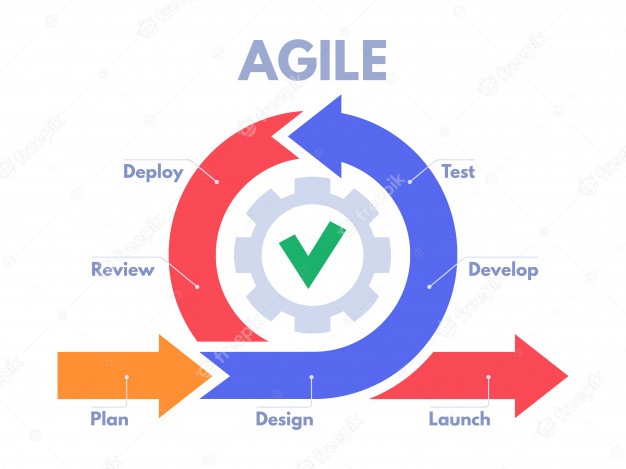Scrum? But what are we talking about!…
Scrum is a methodology that helps teams work together.
Like a rugby team practicing for the big game, the scrum encourages teams to learn from their own experience, to self-organize around a project problem and to constantly reflect on successes and failures, with regular retrospectives. The aim, of course, is continuous improvement.
We also talk about agile method.
While this way of conceiving work was initially designed and used by IT development teams, its principles and lessons can be extended to all areas of the company. This is one of the reasons why scrum is so popular. Often referred to as an agile project management framework, scrum describes a set of meetings, tools and roles that work in concert to help teams structure and manage their work.
In this article, we’ll look at how a traditional Scrum framework is composed, with the help of the Scrum Guide and David West, CEO of Scrum.org. We’ll also include examples of how we see our customers deviating from these fundamentals to meet their specific needs. To this end, our own Megan Cook, Product Manager for Jira Software and former agile coach, will be providing tips and tricks in our Agile Coach video series:
Iterations and Sprints
An iteration is a period of time during which a stage in the development of a project takes place. Its duration can vary, but should ideally be between 1-4 weeks. In most cases, this period is fixed for the duration of a particular project.
A crucial aspect of the agile approach is that a project consists exclusively of a sequence of iterations. Perhaps the only exception to this is the brief “planning and visioning” phase before the actual development process begins.

In general, iterations follow the weeks of the calendar, starting on Monday and ending on Friday. It should be noted that this is more of a convenience than a recommendation, but different teams adopt different conventions. The fixed duration of an iteration gives teams the possibility of obtaining, on the basis of the amount of work remaining, a precise estimate of the time it will take to complete the project.
Iteration enables teams to keep up a regular, predictable pace to increase value and improve increments of what has been developed previously.
These short periods help all project stakeholders (customers, sales people, designers and technical teams) to evaluate and test business and technical assumptions frequently, in a system that is already up and running.
A sprint is just one of these short time-boxes. Sprints are at the very heart of scrum and agile methodologies. Good sprint management will help everyone involved in agile to deliver better software, without headaches.








